Do you have a question about the Triumph Tiger 800XC and is the answer not in the manual?
General introduction to the manual and its purpose.
Explains the meaning of warning, caution, and note symbols.
Guidelines on model suitability, load limits, and heat warnings.
Recommendations for protective gear, fuel/exhaust fume safety, and parking.
Safe operation of handlebars, footrests, and driver condition.
Illustrates the placement of various warning decals on the motorcycle.
Identifies key components and controls for Tiger 800 and 800XC.
Explains dashboard indicators, speedometer, tachometer, and trip computer.
Adjusting clock, units, ABS, TPMS, and understanding warning lights.
Procedures for starting, stopping, moving off, and changing gears.
Safe braking techniques, ABS usage, and parking guidelines.
Warnings and advice for riding at high speeds.
Explains maintenance intervals and importance.
Procedures for engine oil and filter checks and changes.
Coolant level checks, adjustments, and changes.
Inspection and adjustment of throttle and clutch.
Lubrication, adjustment, and wear inspection procedures.
Procedures for brake wear, fluid, and pad checks.
Guidance on tyre wear, pressure, and replacement.
Battery maintenance, charging, and related safety.
Location and identification of fuses.
Headlight adjustments and bulb replacement.
General cleaning, paint care, and leather product care.
Steps to prepare the motorcycle for storage.
Steps for bringing the motorcycle out of storage.
Key physical and engine specifications.
Recommended tyre sizes and electrical component details.
Critical tightening torques and fluid specifications.
General introduction to the manual and its purpose.
Explains the meaning of warning, caution, and note symbols.
Guidelines on model suitability, load limits, and heat warnings.
Recommendations for protective gear, fuel/exhaust fume safety, and parking.
Safe operation of handlebars, footrests, and driver condition.
Illustrates the placement of various warning decals on the motorcycle.
Identifies key components and controls for Tiger 800 and 800XC.
Explains dashboard indicators, speedometer, tachometer, and trip computer.
Adjusting clock, units, ABS, TPMS, and understanding warning lights.
Procedures for starting, stopping, moving off, and changing gears.
Safe braking techniques, ABS usage, and parking guidelines.
Warnings and advice for riding at high speeds.
Explains maintenance intervals and importance.
Procedures for engine oil and filter checks and changes.
Coolant level checks, adjustments, and changes.
Inspection and adjustment of throttle and clutch.
Lubrication, adjustment, and wear inspection procedures.
Procedures for brake wear, fluid, and pad checks.
Guidance on tyre wear, pressure, and replacement.
Battery maintenance, charging, and related safety.
Location and identification of fuses.
Headlight adjustments and bulb replacement.
General cleaning, paint care, and leather product care.
Steps to prepare the motorcycle for storage.
Steps for bringing the motorcycle out of storage.
Key physical and engine specifications.
Recommended tyre sizes and electrical component details.
Critical tightening torques and fluid specifications.
| Engine Type | Liquid-cooled, 12 valve, DOHC, in-line 3-cylinder |
|---|---|
| Displacement | 800 cc |
| Compression Ratio | 11.3:1 |
| Max Torque | 79 Nm @ 7, 850 rpm |
| Fuel System | Multipoint sequential electronic fuel injection |
| Final Drive | O-ring chain |
| Clutch | Wet, multi-plate |
| Gearbox | 6-speed |
| Frame | Tubular steel trellis frame |
| Front Brakes | Twin 308 mm floating discs, Nissin 2-piston sliding calipers, switchable ABS |
| Rear Brakes | Single 255 mm disc, Nissin single piston sliding caliper, switchable ABS |
| Front Tire | 90/90-21 |
| Rear Tire | 150/70 R17 |
| Bore x Stroke | 74.0 x 61.9 mm |
| Max Power | 95 PS (70 kW) @ 9, 300 rpm |
| Exhaust | Stainless steel 3 into 1 exhaust system |
| Front Wheel | 21 x 2.15 in |
| Rear Wheel | 17 x 4.25 in |
| Fuel Tank Capacity | 19 liters |
| Seat Height | 840-860mm |
| Rear Suspension | Showa monoshock |
| Wheelbase | 1545 mm |
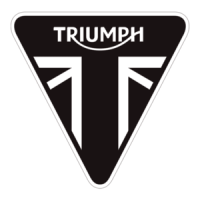
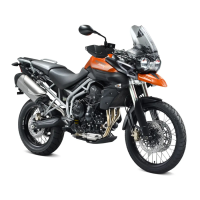
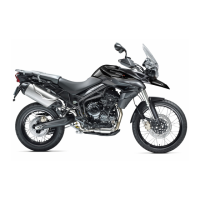


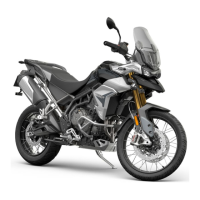
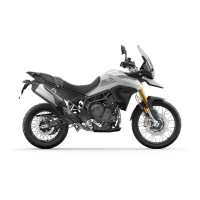
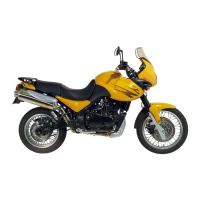
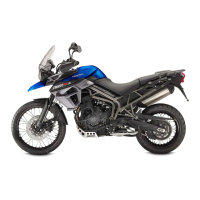
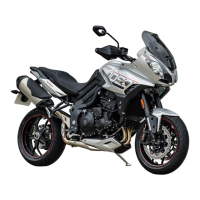
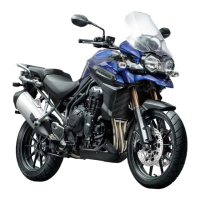
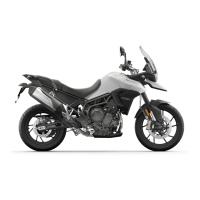
